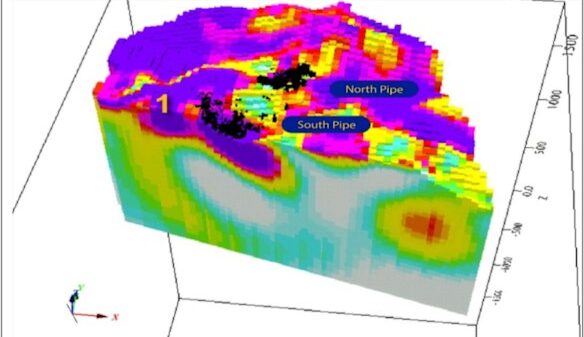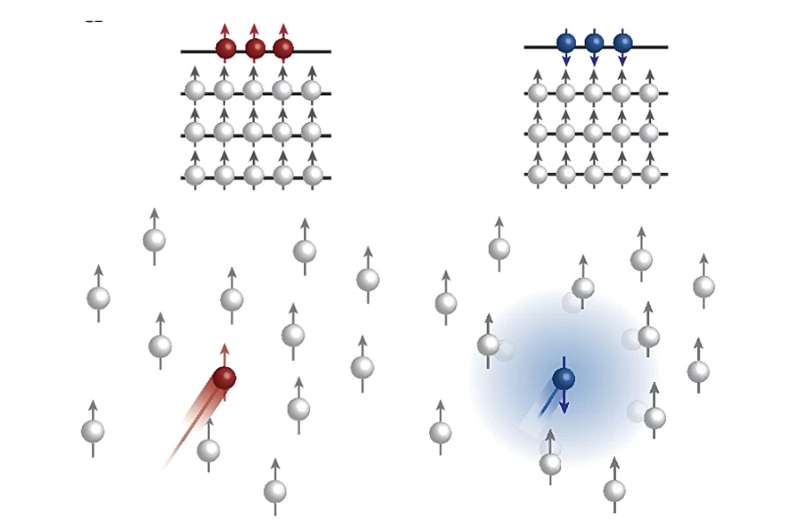A team of researchers from Columbia University and the National High Magnetic Field Laboratory has developed a novel mechanism for achieving spin-selective transport in tungsten diselenide (WSe2). Their findings, published in the journal Nature Physics, could pave the way for the creation of compact, energy-efficient components crucial for advancing spintronic devices.
Spintronics, or spin electronics, represent a significant evolution in technology, utilizing both the charge and intrinsic spin of electrons. The ability to manipulate the spin of electrons for fast and energy-efficient devices relies heavily on identifying materials with tunable spin-selective conductivity. This allows engineers to control the movement of electrons with varying spin orientations, ideally through external magnetic or electric fields.
In their study, the researchers focused on WSe2, a two-dimensional material that can be synthesized to atomic thinness, much like graphene. Unlike graphene, WSe2 exhibits a marked energy splitting between spin “up” and spin “down” states when subjected to an external magnetic field. Additionally, it possesses stronger Coulomb interactions among charge carriers and a larger effective mass, presenting unique opportunities for spin-selective transport.
The team conducted transport measurements on high-quality WSe2 devices under significant magnetic fields. They observed distinct energy levels, known as Landau levels, which emerge in two-dimensional materials when exposed to large magnetic fields. Typically, these levels alternate between spin-up and spin-down states. However, WSe2 displayed an exceptional characteristic where multiple consecutive levels could share the same spin state before encountering the opposite spin.
Co-first author Qianhui Shi explained, “What we realized in this new study is that when we looked at current flowing in the highest Landau level, it behaves similarly to the sandwich structures used for magnetic memory.” The researchers found that when the spin of the highest level matched the lower levels, conductivity was high. Conversely, when there was a mismatch, conductivity dropped sharply, indicating a spin-selective transport effect.
The study revealed a significant contrast in electrical conductivity based on the spin of mobile carriers at the Fermi level, the energy level representing the highest occupied state of charge carriers in a material. When these carriers matched the majority spin group, they moved freely, contributing to high conductance. In contrast, those in the minority spin group experienced suppression, leading to a dramatic decrease in conductivity, with some instances showing near-zero conductivity.
The researchers proposed that the observed effects might be attributed to the strength of interactions between mobile carriers and the background of already-filled electronic states. When mobile carriers have a differing spin, they experience strong Coulomb interactions with immobile charges, causing them to move sluggishly or become localized. This behavior contrasts with scenarios where spins match, allowing electrons to pass through with minimal hindrance.
The mechanism identified not only achieves spin-selective transport within a single material but also offers distinct advantages over previous methods that required spatially separated magnetic domains. Lead Principal Investigator Cory Dean noted, “This mechanism achieves spin filtering within a single material, driven by the interaction between free and localized spins residing in energy-separated bands.”
Future research will aim to deepen the understanding of this mechanism, exploring its potential without the need for an external magnetic field. The researchers plan to investigate the prospects of Moiré structures, which could facilitate similar effects through optical manipulations of quantum properties like valley pseudospin, further enhancing the technology’s potential.
This groundbreaking study represents a promising advancement in the field of spintronics, opening avenues for the development of efficient, tunable devices capable of shaping future electronic landscapes.





























































